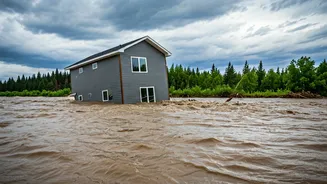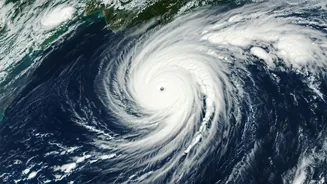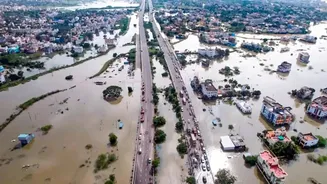The River's Fury
In an unfortunate event, a family's three-year-old home met an abrupt end when it was overcome by a powerful river. The natural force demonstrated an immense
power, quickly consuming the dwelling and leaving the family in shock. The incident highlighted the unpredictable nature of the environment, and the devastation that can occur in a matter of moments. The river, in its heightened state, was a stark reminder of nature's raw and untamed power. This situation left the family with nothing but the clothes on their backs and the need to search for a new safe space to call home. Their lives were unexpectedly uprooted, and they were left with the difficult task of finding stability amidst the chaos, navigating the complexities of finding a new home and rebuilding their lives.
Loss and Displacement
The family was faced with profound emotional and practical challenges after their house was destroyed. They were immediately displaced, which meant finding temporary accommodation while coping with the loss of their home and cherished belongings. The psychological impact of such a sudden event was significant; it brought a mix of grief, disbelief, and a sense of displacement. Beyond the emotional toll, the family had to deal with the logistical complexities of the situation. This involved assessing their immediate needs, such as shelter, clothing, and food, and planning for the long-term, including finding a new permanent home. Dealing with insurance claims, securing essential documents, and navigating bureaucratic hurdles added to the family's stress. The incident disrupted their established routines and created uncertainty in all aspects of their lives, highlighting their resilience as they attempted to rebuild their lives from scratch.
Searching for Stability
Following the devastation, the family started the difficult process of finding a place to call home. They were now in search of a new home that could offer them security, safety, and a sense of normalcy after their sudden displacement. The search was further complicated by various factors. Factors like limited financial resources, availability of suitable properties in the area, and the desire to remain close to their community and support networks came into play. The family likely had to consider multiple housing options, which included renting temporary accommodations while looking for a permanent residence or exploring options for purchasing a new property. They had to navigate legal and financial complexities, such as securing loans, dealing with real estate agents, and assessing the structural integrity of potential homes. The family was also left to face emotional challenges, trying to find a place that could restore the sense of belonging and provide a safe space where they could begin to heal and rebuild their lives.
Rebuilding Their Lives
As the family looked for a new place to live, they simultaneously worked on rebuilding their lives. This included practical steps like replacing essential belongings, re-establishing routines, and dealing with the emotional aftermath of the disaster. They would probably need to make important financial decisions, such as filing insurance claims, managing debt, and finding ways to generate income. They would also require social support and community outreach, including asking for assistance from relatives, friends, and support groups. The family's emotional well-being was essential during this period of adjustment, as they needed to find ways to cope with grief, loss, and anxiety. This may have involved seeking therapy, practicing self-care, and building a network of support that could assist them in overcoming obstacles and moving forward. Rebuilding their lives was a lengthy process that required perseverance, adaptability, and unwavering determination.
Lessons and Reflections
This devastating incident offered important insights into the unpredictability of nature and the need for disaster preparedness. It also highlighted the importance of community support, resilience, and the emotional strength required to confront significant adversity. The loss served as a reminder of the fragility of human possessions and the significance of familial relationships and mutual support in times of crisis. It highlighted the value of having a reliable network to turn to for assistance, whether it was from relatives, friends, or organizations that specialize in disaster relief. Moreover, this experience underscored the importance of securing adequate insurance coverage to protect against financial setbacks caused by unforeseen events. The family's experience can serve as a lesson for others. It could encourage individuals to examine their own disaster preparedness plans, assess their insurance coverage, and build a supportive community that can assist in times of need. Their story provides crucial awareness for all people.














